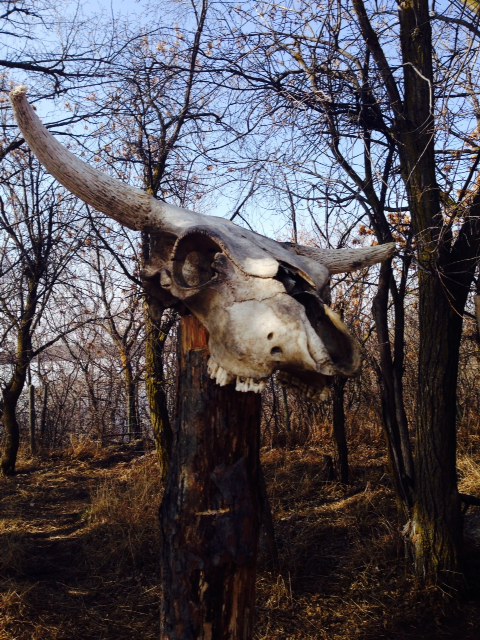
I know, right? I’m in the wrong season. Bones are for Samhain, when the Wheel turns us toward the dark, and we contemplate our mortality, gazing into the shadowed eye-sockets of a bleached skull. Bones are not for spring, not for warm weather and shoots of green and vernal bunnies. Bones are a bit macabre for that, yes? … I thought so too.
But here on the farm we have a black dog named Shadow, who has a love affair with bones. Throughout the late fall and winter, while the butchering season endures, Shadow delights in raiding the slaughter-pen for all types of cast-off body parts: hoofs, pigtails, chicken heads, whatever. And for some strange reason she drags them all into our front yard. Now, if you know Saskatchewan winter weather, you know that we rarely lack for a blanket of thick white snow. For four and a half months of the year, the garth looks pristine. But come snow-melt, a whole other world is revealed. Rich black earth, tender sprigs of green herb, and yes … bones. A whole winter’s worth of Shadow’s favourite bones.
As a ChristoPagan priest, I don’t find this at all surprising (though the sight of all those bones can be a bit unsettling). As I write, we are in the middle of Holy Week in the Christian year. It is a time to reflect on the precarious paradox of life-in-death and death-in-life. Not long ago, the lenten lectionary provided the oracle of Ezekiel’s valley of dry bones. The Jewish Passover of this month’s full moon recalls an ancient liberation from a genocidal bone-land of slavery and oppression. And the Christian liturgical trajectory points toward Good Friday’s Golgotha, the place of the skull. Bones, bones everywhere.
But are we really surprised by this? Pagans and Christians and Earthlings of all stripes, we know that death and life are intimately connected. Winter’s bones, subject to the elemental cleansing of the bonfire (bone-fire), become fertilizer for the soil. Fecundity, both spiritual and physical, springs from the dead particles which compose both living soil and soul. Eostre’s resurrection and new life are profoundly dependant on the reality of death and decay. The two exist together, or not at all.
So how about you? Any bones in your yard this spring? Any death or grief or bondage or sorrow that you need to acknowledge in this season of rebirth? Don’t be afraid of those dry bones: take them in your hands, and hold them up to the cleansing power of the Sun. The healing of the humus begins with the season of the bones.